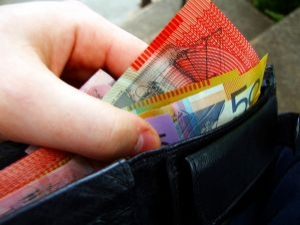One of the best ways to encourage children to grow a garden to develop a range of skills is to create an edible garden. An edible garden is a garden that contains flowers, herbs, seeds, berries and plants that can be eaten.
Designing An Edible Garden
Edible does not have to be large. It can start small with a few pots and containers, or even just a window box with a few herbs.
When planning an edible garden, some suggestions include:
- Space – Where to create the garden? How big will it be?
- Position - A sunny spot with easy access to water will work well and partial shade.
- Veggies - What Would You Like To Grow and Eat
What To Plant In The Edible Garden
When planning what to plant in an edible garden, you can include:
- Favourite fruits, vegetables, herbs.
- Sensory appeal – grow plants you like to see, smell or touch such as herbs are a good example.
- Climate – consider which plants are best suited to the local climate
Edible Flowers, Herbs and Vegetables
Flowers and herbs can be used in salads, can add flavour to cooked dishes, and can be made into teas or used as a garnish.
Vegetables, fruits and many plants can be eaten raw or cooked.
Examples of flowers, herbs and plants that are suitable for an edible garden include:
Flowers –
- borage,
- carnation,
- chamomile,
- chrysanthemum,
- fuchsia,
- geranium,
- hibiscus,
- hollyhock,
- honeysuckle,
- impatiens,
- lavender,
- lemon blossom,
- lilac,
- marigold,
- nasturtium,
- pansy,
- rose,
- salvia
- violet
Herbs –
- rosemary,
- basil,
- chives,
- sage,
- mint,
- oregano,
- parsley
- thyme
- coriander
Seeds and Berries –
- blueberries,
- mulberries,
- pumpkin and
- sunflower seeds
Fruits –
- kiwi fruit,
- strawberries and
- passionfruit
Veggie Garden -
Vegetables that are good choices and easy to grow to include:
- Beets
- Carrots
- Radishes
- cherry tomatoes,
- strawberries,
- peas
- lettuce,
- tomatoes,
- silverbeet,
- corn,
- capsicum
- beans
To add interest and colour to the vegetable garden you can include:
- Marigolds
- Nasturtiums
- Mint
- Dill
- Sunflowers
- Zinnias
Gardening Activities For Children
Young children are curious and highly motivated to learn new skills like gardening and cooking. With adult encouragement in a safe, carefully prepared, and supervised environment, growing and cooking abilities can advance rapidly, aligned with age-appropriate activities:
Appropriate activities for two-year-olds include:
- pushing child-size wheelbarrows
- watering plants with help from a teacher
- pushing large seeds, such as beans and peas, into the soil
- observing insects and ripening produce
Appropriate activities for three-year-olds include:
- mixing soil to prepare garden beds
- planting large seeds and seedlings
- filling up watering cans
- watering plants
- pulling weeds
- observing plant growth
- comparing leaf shapes
- describing the appearance of fruits and vegetables
Appropriate activities for four- and five-year-olds include:
- shovelling compost and mulch
- raking soil to prepare garden beds
- planting small seeds and seedlings
- harvesting ripe produce
- training and weaving vines onto a trellis or fence
- collecting seeds
- filling up watering cans
- watering plants
- pulling weeds
- identifying garden insects
- weighing produce
- comparing shapes and sizes of produce
- observing insects and birds
- drawing garden scenes or items
Creating an edible garden enables children to develop sustainability practices and brings an abundance of learning opportunities such as understand how food is grown, the lifecycle of a plant and more!.
References:
Gardening, Planning An Edible Garden, Better Health Victoria
Gardening Know-How: Children And Vegetable Gardens: How To Make A Vegetable Garden For Kids, Gardening Know-How
Growing and Cooking Vegetables In A Childcare Centre, NSA Education



 As an Educator in Australia, your pay rate falls under the Children’s Services Award 2010. This award states the minimum amount that an employer can
As an Educator in Australia, your pay rate falls under the Children’s Services Award 2010. This award states the minimum amount that an employer can When working as a qualified Early Childhood Teacher (with a university degree) within a service, your rate of pay will come from the Educational Services
When working as a qualified Early Childhood Teacher (with a university degree) within a service, your rate of pay will come from the Educational Services When working as a Diploma Qualified Educator your pay rate is from the Children's Services Award 2010. This Award states your minimum rate of pay
When working as a Diploma Qualified Educator your pay rate is from the Children's Services Award 2010. This Award states your minimum rate of pay When working as a Cert 3 Qualified Educator, your pay rate is from the Children's Services Award 2010. This Award states your minimum rate of
When working as a Cert 3 Qualified Educator, your pay rate is from the Children's Services Award 2010. This Award states your minimum rate of Educational Leaders play a crucial role in their early childhood service by ensuring that the educational program aligns with best practices and supports the holistic
Educational Leaders play a crucial role in their early childhood service by ensuring that the educational program aligns with best practices and supports the holistic In early childhood education and care, ratios are more than a technicality—they are a frontline safeguard. Every child deserves responsive supervision, emotional connection, and developmental
In early childhood education and care, ratios are more than a technicality—they are a frontline safeguard. Every child deserves responsive supervision, emotional connection, and developmental Here’s a comprehensive Mobile Phone and Smart Watch Policy tailored for early childhood education and care (ECEC) services in Australia, aligned with the latest 2025
Here’s a comprehensive Mobile Phone and Smart Watch Policy tailored for early childhood education and care (ECEC) services in Australia, aligned with the latest 2025 With the new national child safety reforms kicking in on 1 September 2025, early childhood services like yours have a real opportunity to lead the
With the new national child safety reforms kicking in on 1 September 2025, early childhood services like yours have a real opportunity to lead the The Sea of Fish Challenge is a national initiative that invites children, educators, families, and communities to create and display fish artworks as a symbol
The Sea of Fish Challenge is a national initiative that invites children, educators, families, and communities to create and display fish artworks as a symbol Across the early childhood education and care sector, educators are sounding the alarm: current staffing ratios are insufficient to deliver safe, meaningful, and developmentally appropriate
Across the early childhood education and care sector, educators are sounding the alarm: current staffing ratios are insufficient to deliver safe, meaningful, and developmentally appropriate


